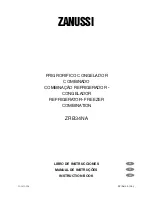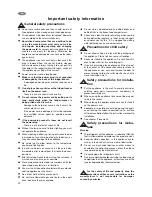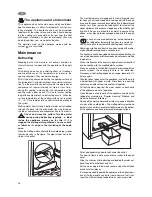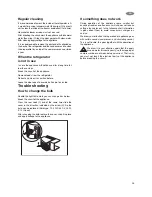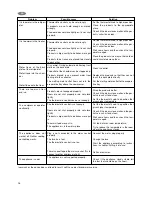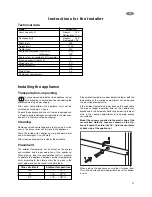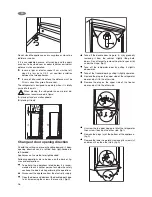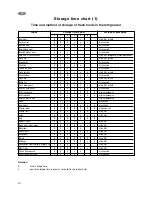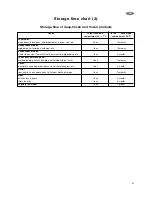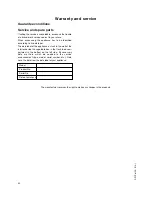
34
The appliance and environment
This appliance does not contain gases which could dam-
age the ozone layer, in either its refrigerant circuit or insu-
lation materials. The appliance shall not be discarded
together with the urban refuse and rubbish. Avoid damag-
ing the cooling unit, especially at the rear near the heat
exchanger. Information on your local disposal sites may
be obtained from your municipal authorities.
The materials used on this appliance marked with the
sympol are
recyclable.
Maintenance
Defrosting
Bleeding part of the moisture of cooling chambers in
form of frost and ice goes with the operation of the appli-
ance.
Thick frost and ice has an insulating effect, so it reduces
cooling efficiency as the temperature increases in the
cooling chambers, they need more energy.
At this type of appliance defrosting the cooling surface of
the refrigerator is automatic without any external interven-
tion.The thermostatic control interrupts the operation of
compressor at regular intervals for more or less time -
during this cooling is interrupted - the temperature of the
cooling surface goes above 0°C due to interior heating
load of the compartment, so defrosting occurs. When the
surface temperature of the cooling surface has reached
+3 - +4 °C the thermostatic control restarts operation of
the system.
Melting water flows through defrost water outlet leaded
through the back into the evaporator tray maintained on
the top of compressor and evaporates due to its warmth.
Check and clean the outlet of melting water
coming during defrosting regularly - a label
inside the appliance warns you for this. If it is
clogged the melting water gathered can cause earli-
er failure as it can go to the insulating of the appli-
ance.
Clean the melting water outlet with the supplied pipe scraper
that can be seen in the figure. The pipe scraper has to be
stored in the outlet.
The most typical case of clogging up in the melting water out-
let when you put food wrapped in some paper into the appli-
ance and this paper contacts back plate of the refrigerator and
freezes to it. If you remove the food right at this moment the
paper will tear and it can cause clogging up in the outlet by get-
ting into it. So you are asked to be careful - because of the
above - when placing foods wrapped in paper into the appli-
ance.
In case of increased demand e.g. during heatwaves,
the refrigerator temporarily happens to operate con-
stantly - during this the automatic defrosting does not work.
Remaining small ice and frost stains on back plate of the refrig-
erator after defrosting period is not abnormal.
The freezer can not be equipped with automatic defrosting set
since the deep-frozen and frozen foods do not endure melting
temperature.
When small frost and ice occurs scrape off and remove frost
and ice coating with the supplied plastic scraper.
When ice coating is so thick that it cannot be removed with the
plastic scraper, the cooling gill have to be defrosted.
Frequency of defrosting depends on usage (generally 2-3
times a year).
Take the frozen foods out of the appliance, and put them into
a basket lined with paper or cloth. Store them in a possibly
cool place or replace them into another refrigerator.
Pull out the mains plug from the mains socket, so both parts
of the appliance are out of operation.
Open the doors of both parts of the appliance and clean the
refrigerator according to 'Regular cleaning'. Maintain and
clean the freezer as following:
Sweep off the melting water with a cloth or sponge in direction
of sides of the cooling plates. The melting water swept down
gathers in the outlet channel practically formed in the bottom
of the appliance and can be removed according to figure.
Put an adequately high bowl or dish under the outlet.
The bowl in figure is not a piece of accessories to the appli-
ance!
Wipe the surfaces after defrosting and leading the water out,
bend the plastic outlet back and fix it.
Put the mains plug into the mains socket and put foods taken
out back to their places.
It is recommended to operate the appliance at the highest posi-
tion of the thermostatic control for some hours so that it can
reach the sufficient storing temperature as soon as possible.
EN
Summary of Contents for ZRB34NA
Page 16: ...43 ...

